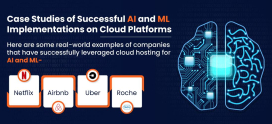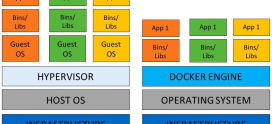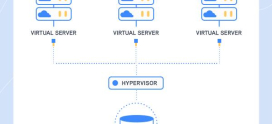
How to Optimize Data Center Energy Consumption
Are you concerned about the rising energy bills and the environmental impact of data centers? You’re definitely not alone. Many of us rely heavily on technology—whether it’s for work, entertainment, or staying connected—and this dependence leads to an astounding demand for energy, especially in data centers. It can be overwhelming to think about energy consumption, but guess what? There are practical ways to optimize energy use without sacrificing performance or security.
Imagine your data center as a busy city. Just like a city needs to manage resources effectively to avoid traffic jams and pollution, your data center can take steps to reduce energy consumption while maintaining optimal operations. This article will explore easy and effective methods to help you and your business save on energy costs while being kind to our planet. Let’s dive into practical tips and expert insights that not only shed light on how to optimize data center energy consumption but also reassure you that these changes are absolutely achievable!
Understanding Data Center Energy Consumption
The first step towards optimization is understanding where energy is being used in your data center. Data centers are power-hungry facilities, consuming massive amounts of electricity to run servers, cooling systems, lighting, and more. According to the U.S. Department of Energy, data centers accounted for about 2% of total electricity consumption in the United States in 2020.
Key Components of Energy Consumption
- Servers: The heart of any data center, constantly running and processing data.
- Cooling Systems: Essential for preventing servers from overheating; they can consume up to 40% of total energy in a data center.
- Power Supply Units (PSUs): These ensure that servers receive the necessary power.
- Lighting: Often overlooked, but lighting can also contribute to overall energy use.
1. Implement Efficient Cooling Techniques
Cooling is one of the biggest contributors to energy consumption in data centers. Traditional cooling methods can be inefficient and cost-prohibitive. So, what can we do?
Hot Aisle/Cold Aisle Containment
This technique organizes equipment into alternating rows of hot and cold air aisles. By containing hot exhaust air and cold intake air, you can significantly improve cooling efficiency.
In-row Cooling
Instead of cooling the entire room, consider in-row cooling units that are placed directly between server racks. This approach offers targeted cooling and reduces energy waste.
2. Upgrade Equipment Regularly
Technology advances rapidly, and older equipment can be less energy-efficient. Regular upgrades to modern, energy-efficient servers and equipment can make a significant difference. Newer technology often comes with optimized power management features that help reduce energy consumption.
The Power of Energy Star Servers
Look for Energy Star certified servers as these machines are designed to minimize energy use while maximizing performance, helping to lower operational costs.
3. Use Virtualization Technologies
Virtualization is like having multiple devices operating efficiently within a single server. Instead of powering several physical servers, you can run numerous virtual servers on a single machine, thus cutting down on energy use.
Example: Case Study of Virtualization Savings
A notable example is the case of a major online retailer that implemented virtualization and was able to reduce its server count from 1,000 to 200. This resulted in a 60% reduction in energy usage and a surplus of available physical space!
4. Monitor and Analyze Performance Regularly
What gets measured often gets managed. Implementing real-time monitoring tools can provide insights into energy consumption patterns, helping you identify areas where you can cut back.
Energy Management Software
Invest in energy management software that allows you to track performance metrics and enables you to make informed decisions about energy use. Data analytics can uncover opportunities for reducing consumption without compromising efficiency.
5. Adopt Renewable Energy Sources
Switching to renewable energy sources can significantly reduce your carbon footprint and operating costs. Solar panels, wind turbines, and biomass can contribute to powering your data center sustainably.
The Benefit of Corporate Social Responsibility (CSR)
Embracing renewable energy not only helps the environment but boosts your company’s image and aligns with corporate social responsibility commitments—a win-win situation!
6. Optimize Layout and Design
How your data center is laid out can impact energy efficiency. Thoughtful design strategies can create a more energy-efficient environment.
Use of Raised Floors
Raised flooring can help improve air circulation within the data center. It allows cool air to easily flow under the floor while providing a designated space for cable management.
Strategic Placement of Equipment
Position servers away from heat-producing equipment and ensure proper airflow management—this simple tweak can reduce cooling costs and extend equipment lifespan.
7. Embrace Energy-Efficient Practices
Small changes can add up to big savings! Encouraging energy-saving habits among staff can help reduce energy consumption further.
Turn Off Equipment When Not in Use
Encourage employees to shut down servers and equipment when they are not in use— this could involve implementing automated shutdown systems or alert notifications.
Energy Awareness Training
Conduct awareness training for your employees on the importance of energy efficiency within the workplace. Simple reminders can lead to significant results.
8. Consider Hybrid Cloud Solutions
Transitioning to hybrid cloud solutions can optimize energy usage by leveraging both on-premises and cloud resources. This allows for scaling resources efficiently based on demand.
Cost Savings and Flexibility
The hybrid cloud model can reduce overall energy needs because it dynamically allocates resources. Especially during high-demand periods, resources can be scaled without the need for additional physical hardware.
9. Regular Maintenance and Upgrades
Don’t forget about routine maintenance—it’s essential for longevity and efficiency. Schedule regular assessments of cooling systems, power supplies, and servers to ensure everything is working optimally.
Cleaning Equipment and Filters
Dust and debris can obstruct airflow and strain cooling systems. Regularly cleaning these components helps maintain efficiency and reduce energy consumption.
10. Continuous Improvement and Evaluation
energy optimization is not a one-time effort. Data centers should have a continuous improvement plan that evaluates the energy consumption metrics regularly, sets long-term goals, and adjusts strategies accordingly.
Stay Updated with Industry Trends
Attend conferences, engage with experts, and follow industry publications to keep your knowledge current. This understanding can lead you to new opportunities for optimizing energy consumption in your data center.
FAQs
What are the main sources of energy consumption in data centers?
The primary sources of energy consumption in data centers include servers, cooling systems, power supply units, and lighting.
How much can I save by optimizing energy efficiency?
Depending on the strategies implemented, organizations can save between 20% to 60% on energy costs through optimization.
Are there any financial incentives for going green?
Yes, many governments and organizations provide tax credits and financial incentives for businesses that implement energy-efficient technologies or renewable energy practices.
Is it necessary to hire outside help for energy optimization?
While not necessary, hiring energy efficiency consultants can provide expertise and insight that ensures a comprehensive energy audit and optimization strategy.
How can I educate my team about energy efficiency?
Conduct workshops or training sessions focused on energy-saving practices, provide ongoing communication and share progress updates to keep energy efficiency top-of-mind.
What are some initial steps to start optimizing energy consumption in my data center?
Start by auditing your current energy consumption, evaluating your equipment and cooling systems, and identifying quick wins such as improving cooling techniques and implementing power management settings.
By embracing these strategies and understanding the components of your data center’s energy consumption, you can significantly reduce energy costs while also benefiting the environment. Remember, even small changes can lead to substantial savings and improved efficiency over time. So, let’s make energy optimization a priority in our tech-driven world!









